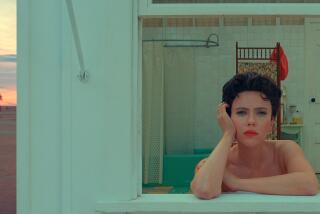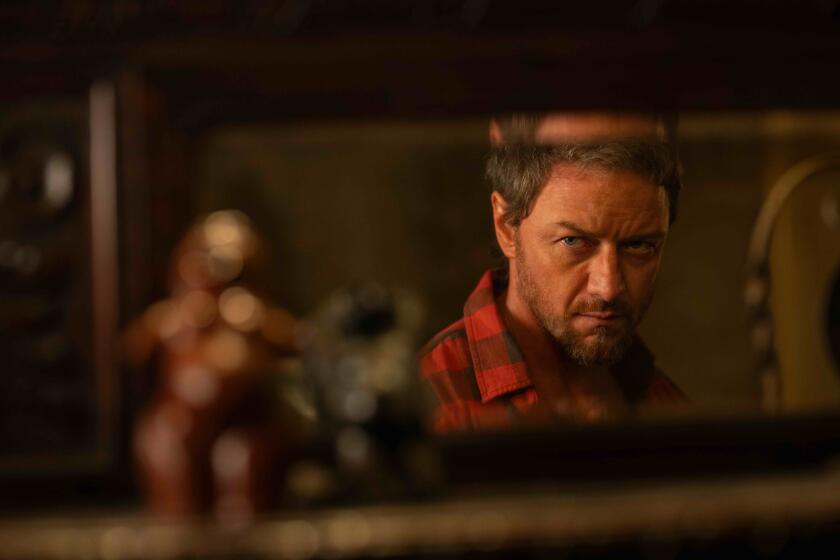Wooden-headed ‘Pinocchio’
Roberto Benigni’s “Pinocchio,” the most expensive Italian movie ever made, with a $45-million budget, opened in Italy in October with tremendous fanfare at a record 860 theaters -- and also a record weekend take estimated at $7.9 million, overriding mixed reviews. By contrast, it opened in America in a dubbed version, ostensibly the better to connect with the family trade, on Christmas Day with little hullabaloo and no press previews, which is scarcely encouraging.
While it’s hard to imagine that in Italian it would seem anything but a stultifying monument to Benigni’s self-indulgence, it could conceivably at least have come alive, if only fitfully. Although technically a superior example of dubbing in regard to intelligent English speech coming out of Italian mouths in reasonably good synchronization, the film nevertheless remains stubbornly moribund. That’s because the English dialogue track has that dreaded hollow and colorless sound of most dubbed movies, and its flatness is further underlined by the contrasting richness of Nicola Piovani’s lovely score.
This “Pinocchio” in fact is lovely to look at, the final work of late, great production and costume designer Danilo Donati, who built a charming medieval town whose citizens are dressed in clothes inspired by Daumier prints, which would set the story roughly in the era when Carlo Collodi wrote it in 1881. Among the many confections Donati created are a red plush and baroque gilt circus arena, a vast interior of a whale filled with such picturesque detritus as a ship’s prow complete with figurehead and, for Pinocchio’s mentor, the Blue Fairy (Nicoletta Braschi, Benigni’s wife and producer), an exquisite Gothic castle and a mice-driven coach so gossamer as to outshine any conceived for Cinderella (or owned by Elizabeth II).
But the film is all too literally an instance of “all dressed up and no place to go.” As the wooden puppet who yearns to be human, Benigni, again directing himself in his first outing since the seriously overrated “Life Is Beautiful,” is steadfastly insufferable, from his naughty, naive stage through a transformation to a state of virtue that is steeped in a self-congratulatory martyrdom and nobility.
When Benigni starred in Federico Fellini’s 1990 “Voice of the Moon,” Fellini envisioned making a “Pinocchio” with Benigni, and with his seductive and often profound visionary style, he might well have pulled it off. Would that Benigni had let the idea die with the maestro.
*
‘Pinocchio’
MPAA rating: G (general audiences)
Times guidelines: Suitable for all ages
Roberto Benigni Pinocchio, dubbed by Breckin Meyer
Nicoletta Braschi The Blue Fairy, dubbed by Glenn Close
Mino Bellei Medoro, the Blue Fairy’s servant, dubbed by Eric Idle
Carlo Guiffre Geppetto/the Narrator, dubbed by David Suchet
Peppe Barra The Cricket, dubbed by John Cleese
A Miramax Films presentation of a Melampo Cinematografica production, Director Roberto Benigni. Producer Nicoletta Braschi. Producers for Melampo Cinematografica Elda Ferri and Gianluigi Braschi. Executive producer Mario Cotone. Screenplay by Vincenzo Cerami and Roberto Benigni; based on the book “The Adventures of Pinocchio” by Carlo Collodi. Cinematographer Dante Spinotti. Editor Simona Paggi. Music Nicola Piovani. Production design/costumes Danilo Donati. Costumes for The Blue Fairy by Jane Law. Visual effects supervisor Rob Hodgson.
In general release.
More to Read
Only good movies
Get the Indie Focus newsletter, Mark Olsen's weekly guide to the world of cinema.
You may occasionally receive promotional content from the Los Angeles Times.










